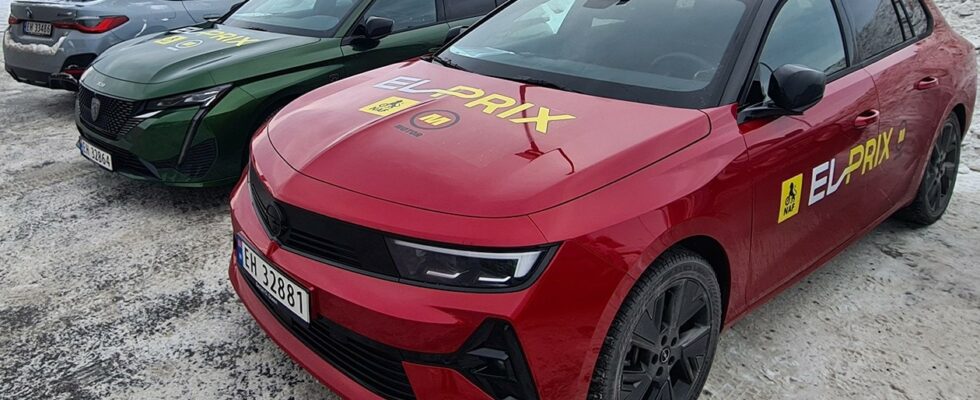Twice a year, the NAF – the Norwegian partner club of the ÖAMTC – invites you to the “El Prix”, which it claims is the world’s largest range and charging test for electric cars. This time, 23 current electric cars, some of which are not yet available in Austria, were tested in practice. The largest deviation from WLTP consumption was recorded for VW ID.7 and Toyota bZ4X AWD.
“We looked at whether and to what extent the actual range differs from the manufacturer’s information. We drove until the battery was completely empty,” explains Florian Merker, who was on site for the ÖAMTC at the current winter test. In total, over 1000 meters of altitude were overcome in Norway, the outside temperature ranged between -5 and -10 degrees – so the results are certainly relevant for Austrian conditions. The most important findings from the test: While the deviations from the WLTP consumption are at moderate summer temperatures are largely negligible, according to the ÖAMTC (with some cars you can even go further than stated by the manufacturer), in extreme cases you have to expect a range of over 30 percent less in winter. The behavior of individual vehicles can be very different. The expert gives two examples: “According to the WLTP, the XPeng G9 has a range of 520 kilometers. In the summer practical test it managed almost 590 kilometers and in the winter only 452 kilometers, which means that the WLTP hits the average very well in this case. It’s different with the Toyota bz4X AWD: its range was three percent below the WLTP value of 460 kilometers in summer and almost 32 percent in winter. BMW as the best European Among the purely European brands, BMW shines with the i5. NAF states a WLTP range of 505 km for the vehicle tested, but the BMW actually managed 443.6 km – a deviation of 12.2 percent. For most test candidates, the winter range deviates between twelve and 30 percent from the WLTP. “Even if it is generally known that extreme temperatures have a major influence on power consumption, both manufacturers and retailers should clearly point out this fact,” demands Merker. The results in detail: Model WLTP range in km Actual range in km Percentage deviation AUDI Q8 Sportback e-tron 55 515 411.4 -20.1% BMW i5 505 443.6 -12.2% BYD Dolphin 427 339.2 -20.6% Ford F-150 Lightning 429 337.5 -21, 3% HiPhi Z 555 522.0 -5.9% Hyundai Ioniq 6 (2WD) 614 467.8 -23.8% Hyundai Kona 454 341.3 -24.8% Jeep Avenger 395 286.0 -27.6% Kia EV9 505 441.9 -12.5% Lotus Eletre 530 464.6 -12.3% Mercedes EQE SUV 491 399.0 -18.7% MG 4 Long Range 520 399.6 -23.2% Nio EL6 529 456.0 -13.8% Nio ET5 560 481.4 -14.0% Nissan Ariya 498 369.4 -25.8% Opel Astra Electric 413 296.0 -28.3% Peugeot e-308 409 297.0 -27.4% Polestar 2 LR 614 430.0 -30.0% Tesla Model 3 629 441.0 -29.9% Toyota bZ4X AWD 460 313.5 -31.8% Volkswagen ID.7 608 414.0 – 31.9% Volvo C40 572 395.0 -30.9% In winter the juice only ran out after 522 kilometers. “This means that it was just under six percent below the WLTP range of 555 kilometers and is the clear test winner – no other candidate could hold a candle to it, both in absolute terms and in terms of deviation from the WLTP,” explains Merker. However, the good range is favourable not available, the purchase price of the HiPhi Z is around 100,000 euros. But the car shows what is technically possible. The larger of the two available batteries stores 120 kWh. However, it only charges with a maximum of 100 kW. Charging time – from ten to 80 percent in under 30 minutes. In addition to the range, what is particularly important for electric car buyers is how long charging takes. “The good news: Half of the test candidates needed less than 30 minutes to charge from ten to 80 percent,” says Merker. “It also became apparent that larger batteries are not only relevant for the maximum possible range, but are also charged more quickly.” The technician’s conclusion: Current electric cars are very sophisticated both in terms of range and charging technology. These factors could soon take a back seat when making purchasing decisions, while the availability of charging stations and the efficiency of the batteries become increasingly important.
source site-13
